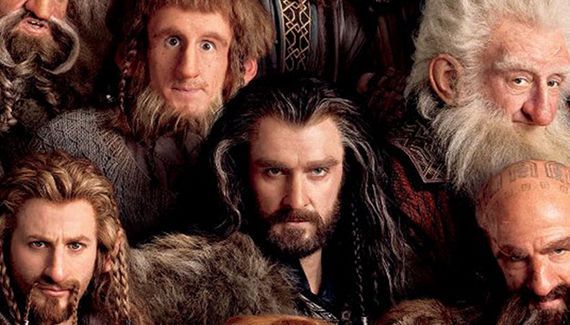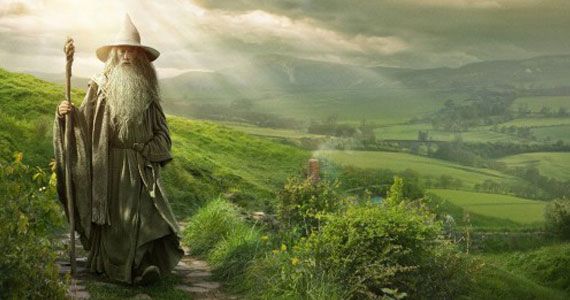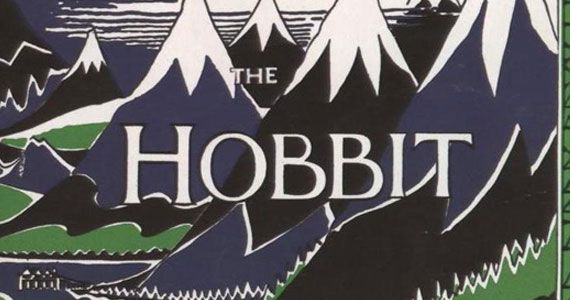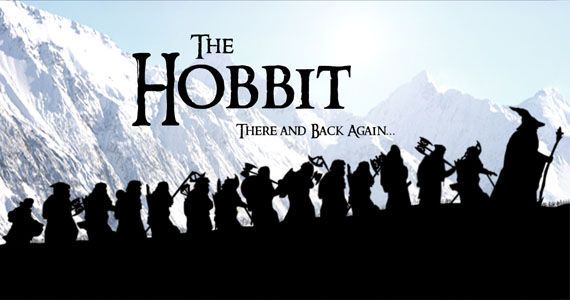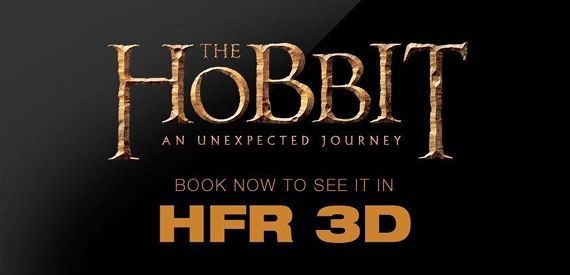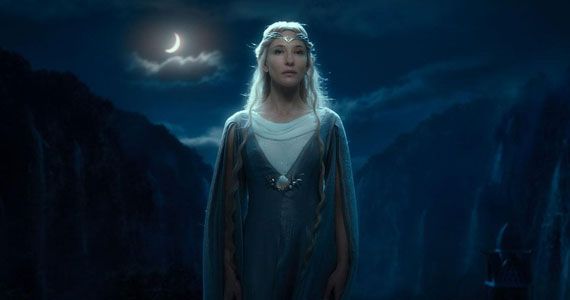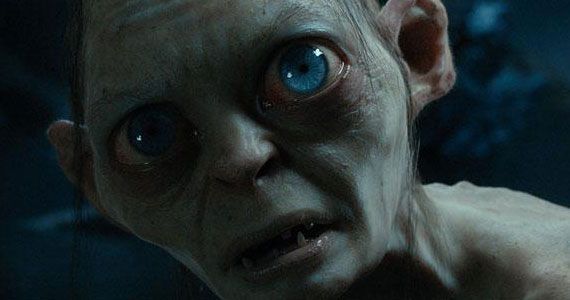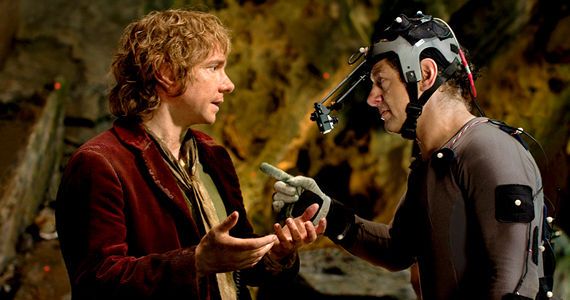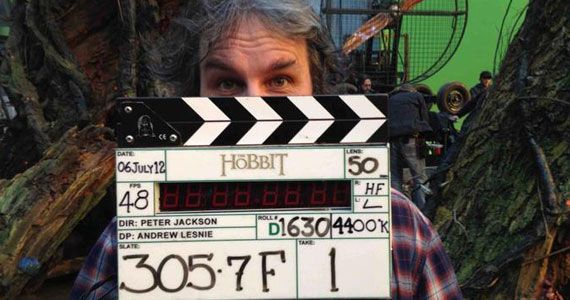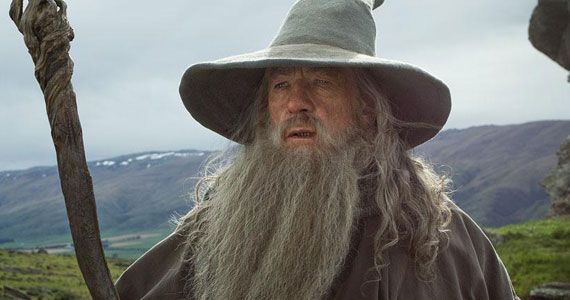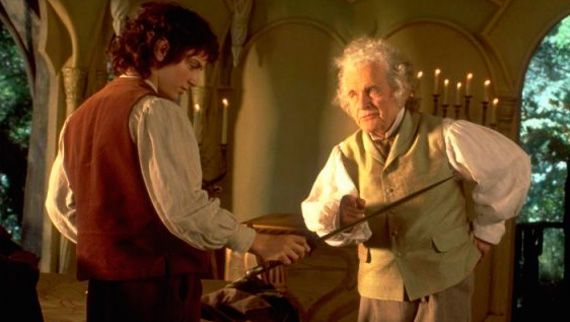It’s been nine years since the final Lord of the Rings film hit theaters, but the time has finally come to return to Middle-earth. Much will be the same, but there have also been some big changes happening during director Peter Jackson’s 266 days of filming on the Lord of the Rings prequel, The Hobbit.
For those of you who are unfamiliar with J.R.R. Tolkien’s The Hobbit, the novel puts the focus on the character of Bilbo Baggins, the uncle of Frodo Baggins (Elijah Wood) in LotR. In The Hobbit: An Unexpected Journey, the first part of Jackson's Hobbit trilogy, a much younger Bilbo (played by Martin Freeman) is recruited by Gandalf the Grey (again portrayed by Ian McKellen) to join 13 dwarves - including the warrior Thorin Oakenshield (Richard Armitage) - for an adventure filled with Goblins, Orcs, Wargs and more.
In honor of The Hobbit: An Unexpected Journey’s December 14th debut, Jackson, producer Philippa Boyens, visuals effects supervisor Joe Letteri, cast members Freeman, Armitage, McKellen, Wood and motion-capture actor/second unit director, Andy Serkis (Gollum), came out to discuss the thrill of revisiting the beloved world, changes Lord of the Rings fans can expect and more.
Get the need-to-know information from the New York City press conference, below:
-
1. THERE IS ENOUGH MATERIAL FOR 3 MOVIES
It’s one thing to adapt a three-volume piece of material into three separate films, but a roughly 300-paged (depending on the edition) tale divided up into three movies? Jackson admitted, “We were originally doing two films,” but pointed out, “It’s a misleading book. It’s written at a really breathless pace. Pretty major events of the story are covered in two or three pages.” He even goes as far to liken it to a child's bedtime story. While this might make it sound as though The Hobbit is even less suitable for a three-film adaptation, Jackson notes that making this film called for some serious character development and conflict.
Armitage used the dwarves as an example. “The dwarf characters, for instance, in Tolkien’s book, they’re very thinly sketched and actually they’re a bit of an amorphous group whereas [in the film] every single dwarf you will get to know throughout the course of this journey.” He continued, “As you’ve seen from the first film, the grand themes are feathered into the texture of it and in order to do that fully and allow each character to have their moment and to play their part in those themes, you will absolutely need three films to do it properly.”
McKellen was a bit more blunt about it, explaining, “Anyone who thinks Peter Jackson would fall for market forces rather than artistic imperative doesn’t know the guy and hasn’t examined the body of his work.” He joked, “If we just had made one movie of The Hobbit, the fact is that all the fans, and I’m thinking of the eight, nine, ten-year-old boys and girls, they would watch it 1,000 times. Well, they’ve now got three films they can watch 1,000 times.”
In all seriousness, Jackson pointed out, “We also adapt the appendices from The Return of the King,” which tacks on about another 100 pages of material. The goal was to use that material to expand The Hobbit while also connecting it to The Lord of the Rings."
-
2. IT HAS A MORE COMEDIC TONE
While there were some lighter moments in The Lord of the Rings trilogy, Jackson stressed that the nature of The Hobbit is quite different, specifically highlighting, “There was a lot more comedy in The Hobbit than there was in The Lord of the Rings films, and it’s comedy of a fish out of water, actually." That fish, of course, being Bilbo on his big journey.
-
3. IT'S THE DEBUT OF HIGH FRAME RATE 3D
Not only did Jackson take on the monumental task of transporting us back to Middle-earth and shooting three massive productions at once - he also challenged the norm of shooting a film at 24 frames per second. The Hobbit is shot at 48 frames per second, and while non-film nerds may be thinking, “24? 48? What’s the big deal?” it is a big deal, and it has the power to completely alter the viewing experience.
Now the question is: was taking the 48 fps plunge worth the risk? Jackson pointed out that most moviegoers under the age of 20 don’t really care and “they often just say the 3D looks really cool.” As for Jackson himself, he said, “I think 3D at 24 frames is interesting,” but it’s the 48 fps that actually allows the 3D to look life-like.
The real benefit (for all you 3D haters out there) is that, according to Jackson, 48 fps 3D makes things “more comfortable to watch,” with Jackson specifically citing less eye strain and a sharper picture.
-
4. THERE'S A LACK OF LADIES
We’ve got Bilbo, Gandalf, and 13 dwarves, but where are The Hobbit ladies? Some are coming - just not in An Unexpected Journey.
Boyens fielded this question, admitting, “I love 13 dwarves and they’re all gorgeous, but you do feel the weight of that lack of femininity.” She also pointed out that, oddly enough, Tolkien wrote brilliantly for women. “He had a real respect for women, and the most powerful being in Middle-earth at this time as he wrote was Galadriel (Cate Blanchett). And so we have her story as it develops, as he wrote it, as it informs the whole.”
There’s also Evangeline Lilly’s Tauriel, but she’ll have to wait until the second movie, The Desolation of Smaug. However, Boyens did toss in, “It’s gonna get good for the girls, I think.”
-
NEXT PAGE: Gollum, Gandalf, and Production Details...
-
5. GOLLUM IS BACK & LOOKING BETTER
Yes, we were all rooting for our main man, Frodo, in the Lord of the Rings movies, but the one who made the greatest impression was certainly Andy Serkis as the ground-breaking motion-capture character, Gollum. If you've seen The Hobbit trailers you already know that Gollum makes a return in An Unexpected Journey (albeit briefly), in a very pivotal sequence which helps foreshadow the events depicted in Lord of the Rings.
Way back when, while working on The Fellowship of the Ring, Letteri remembered thinking, “Gee, if we could just capture what Andy’s doing directly.” Serkis was originally brought on only as a voice actor. Letteri explained that at the time, they conceived of the role as a standard cartoon animation. “You record the voice and you go back and you key frame in, but we saw what Andy did as an actor and we just thought, how do we bring that energy to the screen?” In came motion-capture.
While Serkis was always on set to perform with Elijah Wood and Sean Astin, Jackson recalled, “On Lord of the Rings, Andy would form Gollum on a motion-capture stage - sometimes six months, sometimes a year after the live-action was shot.” He also pointed out, “He was all by himself having to recreate the energy of the first time around.”
However, so many years later, the technology has improved immensely - so much so, it permitted Jackson, Serkis and Freeman to film an entire scene in one shot with no need for Serkis to re-film his material solo in post. Jackson said, “When Andy and Martin were acting together, Martin was being filmed with the cameras, Andy was being captured by the motion capture cameras.”
-
6. RE-CREATING GOLLUM WASN'T EASY FOR ANDY SERKIS
For Serkis, it was this much more integrated method of filming that made becoming Gollum again quite easy... at least technically-speaking. “Returning to the character 12 years later, that wasn’t an issue because we were just able to play our scene out and performance capture happens at exactly the same time.” This came in handy during the aforementioned scene with Freeman because, “it was the first thing to be shot on the movie as an entire chamber theater piece, which lasted about 12 minutes, and Pete wanted to do that so that we could really investigate that scene and allow Martin to experiment with the character.”
However, there was one thing that made playing Gollum in The Hobbit a little more difficult than in Lord of the Rings. Serkis pointed out, “These characters have been absorbed into public culture to such a high degree and there really was a sense of wanting to do an impersonation of a character.” But that’s where Freeman made a big impression; Serkis notes how quickly and easily he began engaging with Martin as Gollum.
-
7. SERKIS ALSO DIRECTS
With Gollum’s screen time far reduced in The Hobbit, Serkis had a lot of time on his hands – that is, until Jackson asked him to pull double-duty. Serkis was ready for a two-week stint bringing Gollum back to life, but just four weeks before going to work, Jackson asked Serkis to be his 2nd unit director. Serkis recalled, “I was utterly thrilled.”
He continued, “Pete’s known I wanted to direct for quite some time. It goes back even as far as Lord of the Rings.” While Jackson’s proposition came with the guarantee of having fun, going bold and supporting the actors, Serkis knew the job would be quite the undertaking - whether he was a first time 2nd unit director or not. “2nd unit, on a project of this scale,” he explained. Forget aerial shots and pickup shots; Serkis was going to have to shoot material with high performance levels.
But he was ready, because he’d learned from the best. “I’ve always absolutely adored Peter’s way of shooting and keeping the camera moving, and the way that he intensifies moments. And so he was an amazing mentor, amazing teacher and was very generous. At the same time as directing The Hobbit, he’s teaching me and that really speaks to what an incredibly, hugely enabling person he is.”
-
8. THE PRODUCTION TOOK AN EXTENDED BREAK
First off, there aren’t many franchises that opt to shoot films back to back to back. And secondly, diving into a 266-day production schedule is just crazy. However, it turns out Jackson and co. weren’t working for 266 days straight, thanks to Martin Freeman.
Jackson knew he wanted Freeman for Bilbo, but because of “the MGM situation,” The Hobbit didn’t have a green light and, therefore, Jackson couldn’t have Freeman sign on the dotted line. During the 18-month waiting/development period, Freeman booked Sherlock. Jackson explained, “[Martin] shot the first season, but the second season of Sherlock was gonna fall right in the middle of our shoot.” Rather than let Freeman slip through his fingers, Jackson, with the studio’s blessing, found a way to accommodate Freeman’s shooting schedule. “We did something very unusual, which was we started shooting The Hobbit, we shot for about four or five months and then Martin had to go do the second season of Sherlock so we literally stopped the shoot for two months, eight weeks, and then when Martin came back, we carried on again.”
Turns out, this little scheduling blip was a blessing in disguise. Jackson continued, “I got time to edit the first four months of shooting, we got time to prepare for the next batch of shooting.” He added, “That little break was actually very welcomed.”
-
9. GANDALF GREY VS. GANDALF WHITE
For those of you who are Tolkien newcomers or aren’t on top of the universe rules, Gandalf isn’t just Gandalf; he’s either Gandalf the White or Gandalf the Grey. Lord of the Rings fans remember those epic saves that Gandalf the White pulled off - but in The Hobbit, the younger (relatively speaking) version of our favorite wizard isn't necessarily so famous and powerful (yet).
McKellen explained, “Gandalf the White, who’s in the second of the Lord of the Rings movies, is on a mission and he has to save the world or help save the world, and so he’s cut his beard down to size, and he’s gone white in the process.” He continued, “But that’s the story of where the hero doesn’t make it back home. Bilbo gets back home because he’s on an adventure. It’s different.” McKellen also joked, “He doesn’t need Gandalf the White to look out for him. He needs the Grey, like he can have a smoke with him or a drink with him, and can tick him off, maybe.”
When one reporter questioned McKellen on his preference between the two, the actor replied, “There’s a bit more range for the actor in Gandalf the Grey and that’s selfishly why I prefer doing him.”
-
10. SOME OF THE ACTORS GOT DIGITAL BOTOX
Actor Elijah Wood talked about how they altered his appearance in the film for his brief scene as Frodo Baggins: “I was actually digitally de-aged in this film. They softened my face.” Presumably, this technique was used on several of the Lord of the Rings actors who appear in The Hobbit as younger versions of the respective characters.
-
The Hobbit: An Unexpected Journey will be in theaters on December 14, 2012.
Follow Perri on Twitter @PNemiroff.

